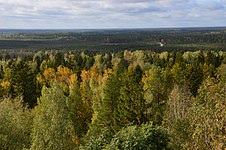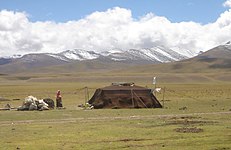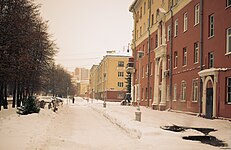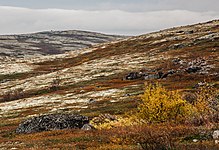Prossinia
Jump to navigation
Jump to search
Republic of Prossinia Republikinn Prossinië ᠫᠷᠣᠰᠰᠢᠨᠢᠶᠠ | |
|---|---|
| Capital | Yakatra |
| Largest largest city | Joblianja |
| Official languages | Prossinian, Karkut |
| Demonym(s) | Prossinian |
| Government | Unitary parliamentary constitutional republic |
| Markus Nalstrayva | |
| Gertrev Jasko | |
| Sonja Lorechev | |
| Legislature | Parliament |
| Establishment | |
• Under Karkut Empire | 1250-1320 |
• Empire of Prossinia | 1530-1815 |
| 1815 | |
• Revolt of 1864 | 1864 |
• Republic of Prossinia | 1864-1914 |
• Socialist Republic of Prossinia | 1914-1983 |
• Current Republic | 7 March 1983 |
| Area | |
• | 2,234,899 km2 (862,899 sq mi) |
| Population | |
• 2021 estimate | 35,789,000 |
• 2016 census | 33,488,989 |
| GDP (PPP) | 2021 estimate |
• Total | $1.2 trillion |
• Per capita | $24,244 |
| GDP (nominal) | 2021 estimate |
• Total | $1.6 trillion |
• Per capita | $22,650 |
| Gini (2020) | medium |
| HDI (2020) | very high |
| Currency | Prossinian Dinar (PRD) |
| Date format | yyyy/mm/dd |
| Driving side | right |
| Calling code | +677 |
| Internet TLD | .ps |
Prossinia (Prossinian: Prossinië), officially the Republic of Prossinia (Prossinian: Republikinn Prossinië), is a landlocked country located in the continent of North Utopia. It is bordered by Regmotto, Karkutia, Narvistan, Danitriss, and East Cammotand. Prossinia covers two million kilometres squared which includes plains, arid steppe and tundra in the north, the majority live in the centrak low lying plain. Prossinia is a unitary parliamentary constitutional republic. Prossinia has made a slow recovery in both demographics and economy since the emd of thr socialisg era. Prossinia is a member of the Universal Pact and Utopian Union after a referendum in 2021.






